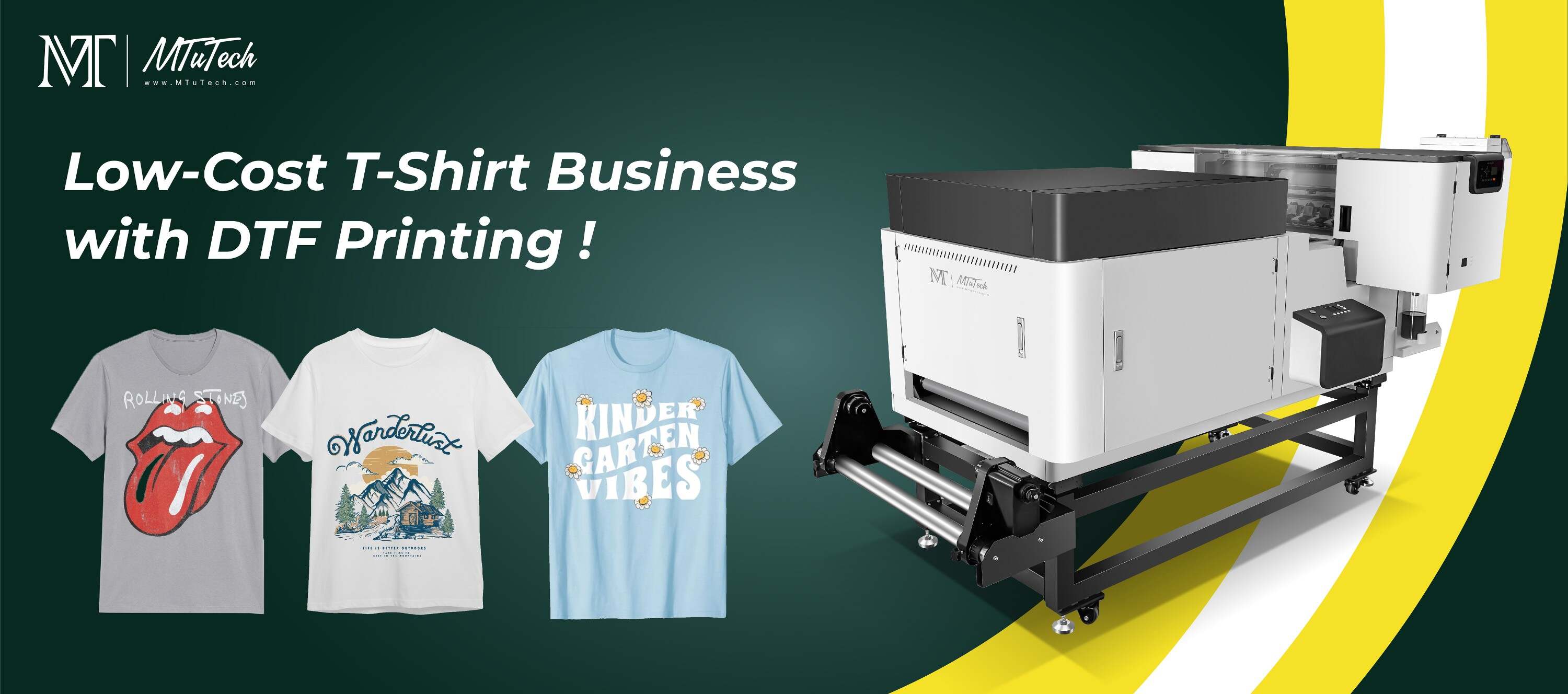Introduction
In the evolving world of printing technology, Direct to Film (DTF) printing has gained remarkable attention for its versatility and high-quality output. Among the various innovations in this field, DTF printers that utilize white ink stand out as a game-changer. This blog post delves into what DTF printers are, the significance of white ink, and the myriad of benefits they offer to businesses and artists alike.
What is a DTF Printer?
A DTF printer is a specialized device designed to print on films, which are then used to transfer designs onto different substrates, including textiles, plastics, and more. This method stands apart from traditional printing techniques like screen printing and direct-to-garment (DTG) printing due to its ability to print vibrant colors on various surface types.
The Importance of White Ink in DTF Printing
While many printers utilize standard color inks, white ink is crucial in the DTF printing process. This ink serves specific purposes that enhance the printing quality and expand the capabilities of the printer.
1. Color Enhancement
White ink acts as a primer on darker surfaces, allowing for brilliant color reproduction. Without it, colors can appear muted or washed out, compromising the design’s intended impact.
2. Versatility
The inclusion of white ink enables DTF printers to work effectively on various materials, including cotton, polyester, and blends, as well as non-textile surfaces like wood or metal. This versatility allows businesses to diversify their product offerings.
3. Opacity and Coverage
White ink ensures opacity in transfers, providing a solid background for colorful designs. The print remains vibrant even on dark or colored fabrics.
Benefits of Using DTF Printers with White Ink
The advantages of using a DTF printer equipped with white ink are manifold. Businesses looking to invest in this technology will find several key benefits:
High-Quality Prints: DTF printers produce sharp, vivid prints that capture intricate details, making them ideal for complex designs and images.
Reduced Production Time: Fast printing speeds without sacrificing quality result in quicker turnaround times for orders.
Lower Setup Costs: Unlike traditional screen printing that requires expensive screens for each design, DTF printing is more cost-effective for small runs or custom orders.
Diverse Applications: The ability to print on various materials opens up new market opportunities, including apparel, home decor, and promotional products.
Durability: The prints produced using DTF technology are long-lasting and resistant to fading, cracking, and peeling, ensuring that your products maintain their quality over time.
Key Features of DTF Printers with White Ink
Understanding the essential features of DTF printers can help you make an informed decision when investing in this technology. Here are some key features to consider:
1. Print Quality
High-resolution capabilities are fundamental in DTF printing. Printers that utilize white ink can achieve resolutions up to 1440 DPI, ensuring intricate designs look crisp and professional.
2. Ink Configuration
DTF printers come with a variety of ink configurations. The ability to mix colors effectively with white ink is crucial for creating vibrant, eye-catching transfers.
3. Compatibility
Ensure that the DTF printer supports various film sizes and types. Compatibility with different substrates enhances the printer's utility and widens its application.
4. User-Friendly Interface
An intuitive interface allows for easy monitoring and adjustments during the printing process, making it more accessible for users, regardless of their experience level.
5. Maintenance Features
Regular maintenance is vital for ensuring optimal performance. Look for printers equipped with self-cleaning systems and user-friendly maintenance procedures.
Applications of DTF Printing with White Ink
The capabilities of DTF printers with white ink extend beyond conventional fabric printing. Some practical applications include:
Custom Apparel: Design and print unique clothing items, from t-shirts to hoodies, that stand out in the market.
Merchandise: Create personalized merchandise for events, concerts, or brand promotions.
Home Decor: Print designs on pillows, blankets, and other textiles, elevating home decor options.
Promotional Products: Produce eye-catching promotional items, including tote bags, caps, and more.
Art and Crafts: Artists can create stunning prints that showcase their creativity on a variety of surfaces.
Conclusion
The introduction of DTF printing technology with white ink is revolutionizing the printing industry. Its ability to produce vibrant, high-quality prints on various surfaces while offering versatility and efficiency makes it an ideal choice for entrepreneurs and businesses in different sectors. From custom apparel to innovative promotional products, the potential applications seem limitless. If you’re considering expanding your printing capabilities, explore our high-quality DTF printers here and unlock new possibilities for your business.
FAQ
What is the difference between DTF and DTG printing?
DTG (Direct to Garment) printing typically relies on printing directly onto fabrics using specialized inkjet technology, whereas DTF printing involves printing on a film transfer that can then be transferred onto various surfaces. DTF is generally more versatile, as it can work on different materials, while DTG is primarily limited to textiles.
Can I use a DTF printer for white and dark fabrics?
Yes, DTF printers with white ink are designed to print on both light and dark fabrics. The white ink provides a base layer that enhances color vibrancy and allows for high-quality prints on darker materials.
How durable are DTF prints?
DTF prints are known for their durability. When applied correctly, they resist fading, cracking, and peeling, maintaining their quality through multiple washes and prolonged use.
Is the maintenance of a DTF printer complicated?
Maintenance for DTF printers is relatively straightforward, especially with models that feature self-cleaning capabilities. Regular maintenance, such as cleaning the printhead and managing ink levels, is essential, but most processes are user-friendly.
What types of inks are used in DTF printing?
DTF printing generally uses water-based inks that are designed for high adhesion, quick drying, and vivid color output. These inks typically include CMYK (Cyan, Magenta, Yellow, Black) along with white ink for enhanced print quality.

